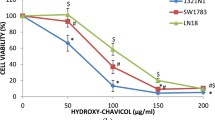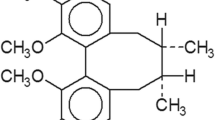Abstract
Patients with glioblastoma multiforme (GBM) have poor therapeutic outcomes despite their current therapy. In an attempt to increase the efficacy of therapy for GBM, we studied the efficacy of arsenic trioxide (ATO), a newly introduced treatment for glioma, combined with silibinin, a natural polyphenolic flavonoid, in the GBM cell line, U87MG. The combination therapy synergically inhibited metabolic activity, cell proliferation, and gelatinase A and B activities; it also increased apoptosis. Additionally, it decreased the mRNA level of cathepsin B, uPA, matrix metalloproteinase-2 and 9, membrane type 1-MMP, survivin, BCL2, CA9; it increased mRNA level of caspase-3. Altogether, these results showed that ATO and silibinin in some cases improved and/or complemented the anticancer effects. This study may supply insight into the design of new combination cancer therapies to cells intrinsically less sensitive to routine therapies and suggested a new combination therapy for the highly invasive human glioma treatment.






Similar content being viewed by others
References
Furnari FB, Fenton T, Bachoo RM, Mukasa A, Stommel JM, Stegh A et al (2007) Malignant astrocytic glioma: genetics, biology, and paths to treatment. Genes Dev 21:2683–2710
Khasraw M, Lassman AB (2010) Advances in the treatment of malignant gliomas. Curr Oncol Rep 12:26–33
Clarke J, Butowski N, Chang S (2010) Recent advances in therapy for glioblastoma. Arch Neurol 67:279–283
Lamszus K, Kunkel P, Westphal M (2003) Invasion as limitation to anti-angiogenic glioma therapy. Acta Neurochir Suppl 88:169–177
Cheng L, Bao S, Rich JN (2010) Potential therapeutic implications of cancer stem cells in glioblastoma. Biochem Pharmacol 80:654–665
Ghavamzadeh A, Alimoghaddam K, Ghaffari SH, Rostami S, Jahani M, Hosseini R et al (2006) Treatment of acute promyelocytic leukemia with arsenic trioxide without ATRA and/or chemotherapy. Ann Oncol 17:131–134
Ning S, Knox SJ (2004) Increased cure rate of glioblastoma using concurrent therapy with radiotherapy and arsenic trioxide. Int J Radiat Oncol Biol Phys 60:197–203
Dilda PJ, Hogg PJ (2007) Arsenical-based cancer drugs. Cancer Treat Rev 33:542–564
Zhao S, Tsuchida T, Kawakami K, Shi C, Kawamoto K (2002) Effect of As2O3 on cell cycle progression and cyclins D1 and B1 expression in two glioblastoma cell lines differing in p53 status. Int J Oncol 21:49–55
Carre M, Carles G, Andre N, Douillard S, Ciccolini J, Briand C et al (2002) Involvement of microtubules and mitochondria in the antagonism of arsenic trioxide on paclitaxel-induced apoptosis. Biochem Pharmacol 63:1831–1842
Sturlan S, Baumgartner M, Roth E, Bachleitner-Hofmann T (2003) Docosahexaenoic acid enhances arsenic trioxide-mediated apoptosis in arsenic trioxide-resistant HL-60 cells. Blood 101:4990–4997
Deep G, Agarwal R (2010) Antimetastatic efficacy of silibinin: molecular mechanisms and therapeutic potential against cancer. Cancer Metastasis Rev 29:447–463
Flaig TW, Glode M, Gustafson D, van Bokhoven A, Tao Y, Wilson S et al (2010) A study of high-dose oral silybin-phytosome followed by prostatectomy in patients with localized prostate cancer. Prostate 70:848–855
Flaig TW, Gustafson DL, Su LJ, Zirrolli JA, Crighton F, Harrison GS et al (2007) A phase I and pharmacokinetic study of silybin-phytosome in prostate cancer patients. Invest New Drugs 25:139–146
Hoh C, Boocock D, Marczylo T, Singh R, Berry DP, Dennison AR et al (2006) Pilot study of oral silibinin, a putative chemopreventive agent, in colorectal cancer patients: silibinin levels in plasma, colorectum, and liver and their pharmacodynamic consequences. Clin Cancer Res 12:2944–2950
Momeny M, Malehmir M, Zakidizaji M, Ghasemi R, Ghadimi H, Shokrgozar M et al (2010) Silibinin inhibits invasive properties of human glioblastoma U87MG cells through suppression of cathepsin B, nuclear factor kappa B-mediated induction of matrix metalloproteinase 9. Anti-Cancer Drugs 21:252
Gazitt Y, Akay C (2005) Arsenic trioxide: an anti cancer missile with multiple warheads. Hematology 10:205–213
Carney DA (2008) Arsenic trioxide mechanisms of action–looking beyond acute promyelocytic leukemia. Leuk Lymphoma 49:1846–1851
Ramasamy K, Agarwal R (2008) Multitargeted therapy of cancer by silymarin. Cancer Lett 269:352–362
Chou TC (2006) Theoretical basis, experimental design, and computerized simulation of synergism and antagonism in drug combination studies. Pharmacol Rev 58:621–681
Franken NA, Rodermond HM, Stap J, Haveman J, van Bree C (2006) Clonogenic assay of cells in vitro. Nat Protoc 1:2315–2319
Hawkes SP, Li H, Taniguchi GT (2010) Zymography and reverse zymography for detecting MMPs and TIMPs. Methods Mol Biol 622:257–269
Schmittgen T, Livak K (2008) Analyzing real-time PCR data by the comparative CT method. Nat Protoc 3:1101–1108
Belloc F, Dumain P, Boisseau MR, Jalloustre C, Reiffers J, Bernard P et al (1994) A flow cytometric method using Hoechst 33342 and propidium iodide for simultaneous cell cycle analysis and apoptosis determination in unfixed cells. Cytometry 17:59–65
Shen Z, Chen G, Ni J, Li X, Xiong S, Qiu Q et al (1997) Use of arsenic trioxide (As2O3) in the treatment of acute promyelocytic leukemia (APL): II. Clinical efficacy, pharmacokinetics in relapsed patients. Blood 89:3354
Chen G, Shi X, Tang W, Xiong S, Zhu J, Cai X et al (1997) Use of arsenic trioxide (As2O3) in the treatment of acute promyelocytic leukemia (APL): I. As2O3 exerts dose-dependent dual effects on APL cells. Blood 89:3345
Kanzawa T, Kondo Y, Ito H, Kondo S, Germano I (2003) Induction of autophagic cell death in malignant glioma cells by arsenic trioxide. Cancer Res 63:2103–2108
Agarwal C, Singh RP, Dhanalakshmi S, Tyagi AK, Tecklenburg M, Sclafani RA et al (2003) Silibinin upregulates the expression of cyclin-dependent kinase inhibitors and causes cell cycle arrest and apoptosis in human colon carcinoma HT-29 cells. Oncogene 22:8271–8282
Mohamed MM, Sloane BF (2006) Cysteine cathepsins: multifunctional enzymes in cancer. Nat Rev Cancer 6:764–775
Vasiljeva O, Turk B (2008) Dual contrasting roles of cysteine cathepsins in cancer progression: apoptosis versus tumour invasion. Biochimie 90:380–386
Chwieralski C, Welte T, Bühling F (2006) Cathepsin-regulated apoptosis. Apoptosis 11:143–149
Pucer A, Castino R, Mirkovic B, Falnoga I, Slejkovec Z, Isidoro C et al (2010) Differential role of cathepsins B and L in autophagy-associated cell death induced by arsenic trioxide in U87 human glioblastoma cells. Biol Chem 391:519–531
Podgorski I, Sloane BF (2003) Cathepsin B and its role(s) in cancer progression. Biochem Soc Symp 70:263–276
Sloane BF, Yan S, Podgorski I, Linebaugh BE, Cher ML, Mai J et al (2005) Cathepsin B and tumor proteolysis: contribution of the tumor microenvironment. Semin Cancer Biol 15:149–157
Levine B, Kroemer G (2008) Autophagy in the pathogenesis of disease. Cell 132:27–42
Kroemer G, Jaattela M (2005) Lysosomes and autophagy in cell death control. Nat Rev Cancer 5:886–897
Weller M, Malipiero U, Aguzzi A, Reed JC, Fontana A (1995) Protooncogene bcl-2 gene transfer abrogates Fas/APO-1 antibody-mediated apoptosis of human malignant glioma cells and confers resistance to chemotherapeutic drugs and therapeutic irradiation. J Clin Invest 95:2633–2643
Fels C, Schafer C, Huppe B, Bahn H, Heidecke V, Kramm CM et al (2000) Bcl-2 expression in higher-grade human glioma: a clinical and experimental study. J Neurooncol 48:207–216
Wick W, Wagner S, Kerkau S, Dichgans J, Tonn JC, Weller M (1998) BCL-2 promotes migration and invasiveness of human glioma cells. FEBS Lett 440:419–424
Chakravarti A, Zhai G, Zhang M, Malhotra R, Latham D, Delaney M et al (2004) Survivin enhances radiation resistance in primary human glioblastoma cells via caspase-independent mechanisms. Oncogene 23:7494–7506
Shirai K, Suzuki Y, Oka K, Noda SE, Katoh H, Itoh J et al (2009) Nuclear survivin expression predicts poorer prognosis in glioblastoma. J Neurooncol 91:353–358
Cardone RA, Casavola V, Reshkin SJ (2005) The role of disturbed pH dynamics and the Na+/H+ exchanger in metastasis. Nat Rev Cancer 5:786–795
Brahimi-Horn MC, Chiche J, Pouyssegur J (2007) Hypoxia and cancer. J Mol Med 85:1301–1307
Swietach P, Vaughan-Jones RD, Harris AL (2007) Regulation of tumor pH and the role of carbonic anhydrase 9. Cancer Metastasis Rev 26:299–310
Martinez-Zaguilan R, Seftor EA, Seftor RE, Chu YW, Gillies RJ, Hendrix MJ (1996) Acidic pH enhances the invasive behavior of human melanoma cells. Clin Exp Metastasis 14:176–186
Chiang Y, Chou CY, Hsu KF, Huang YF, Shen MR (2008) EGF upregulates Na+/H+ exchanger NHE1 by post-translational regulation that is important for cervical cancer cell invasiveness. J Cell Physiol 214:810–819
Kim J, Shin H, Kim T, Cho K, Shin K, Kim B et al (2006) Tumor-associated carbonic anhydrases are linked to metastases in primary cervical cancer. J Cancer Res Clin Oncol 132:302–308
McLean LA, Roscoe J, Jorgensen NK, Gorin FA, Cala PM (2000) Malignant gliomas display altered pH regulation by NHE1 compared with nontransformed astrocytes. Am J Physiol Cell Physiol 278:C676–C688
Said H, Staab A, Hagemann C, Vince G, Katzer A, Flentje M et al (2007) Distinct patterns of hypoxic expression of carbonic anhydrase IX (CA IX) in human malignant glioma cell lines. J Neurooncol 81:27–38
Said H, Hagemann C, Staab A, Stojic J, Kühnel S, Vince G et al (2007) Expression patterns of the hypoxia-related genes osteopontin, CA9, erythropoietin, VEGF, HIF-1alpha in human glioma in vitro, in vivo. Radiother Oncol J Eur Soc Therap Radiol Oncol 83:398
Madshus IH (1988) Regulation of intracellular pH in eukaryotic cells. Biochem J 250:1–8
Nakada M, Okada Y, Yamashita J (2003) The role of matrix metalloproteinases in glioma invasion. Front Biosci 8:e261–e269
Wang M, Wang T, Liu S, Yoshida D, Teramoto A (2003) The expression of matrix metalloproteinase-2 and-9 in human gliomas of different pathological grades. Brain Tumor Pathology 20:65–72
Sawaya R, Yamamoto M, Gokaslan Z, Wang S, Mohanam S, Fuller G et al (1996) Expression and localization of 72 kDa type IV collagenase (MMP-2) in human malignant gliomas in vivo. Clin Exp Metastasis 14:35–42
Rao J, Yamamoto M, Mohaman S, Gokaslan Z, Fuller G, Stetler-Stevenson W et al (1996) Expression and localization of 92 kDa type IV collagenase/gelatinase B (MMP-9) in human gliomas. Clin Exp Metastasis 14:12–18
Lin TH, Kuo HC, Chou FP, Lu FJ (2008) Berberine enhances inhibition of glioma tumor cell migration, invasiveness mediated by arsenic trioxide. BMC Cancer 8:58
Belien AT, Paganetti PA, Schwab ME (1999) Membrane-type 1 matrix metalloprotease (MT1-MMP) enables invasive migration of glioma cells in central nervous system white matter. J Cell Biol 144:373–384
Forsyth PA, Wong H, Laing TD, Rewcastle NB, Morris DG, Muzik H et al (1999) Gelatinase-A (MMP-2), gelatinase-B (MMP-9) and membrane type matrix metalloproteinase-1 (MT1-MMP) are involved in different aspects of the pathophysiology of malignant gliomas. Br J Cancer 79:1828–1835
Rao JS (2003) Molecular mechanisms of glioma invasiveness: the role of proteases. Nat Rev Cancer 3:489–501
Lakka SS, Bhattacharya A, Mohanam S, Boyd D, Rao JS (2001) Regulation of the uPA gene in various grades of human glioma cells. Int J Oncol 18:71–79
Gondi CS, Lakka SS, Yanamandra N, Siddique K, Dinh DH, Olivero WC et al (2003) Expression of antisense uPAR and antisense uPA from a bicistronic adenoviral construct inhibits glioma cell invasion, tumor growth, and angiogenesis. Oncogene 22:5967–5975
Gondi CS, Lakka SS, Dinh DH, Olivero WC, Gujrati M, Rao JS (2004) Downregulation of uPA, uPAR and MMP-9 using small, interfering, hairpin RNA (siRNA) inhibits glioma cell invasion, angiogenesis and tumor growth. Neuron Glia Biol 1:165–176
Chen PN, Hsieh YS, Chiang CL, Chiou HL, Yang SF, Chu SC (2006) Silibinin inhibits invasion of oral cancer cells by suppressing the MAPK pathway. J Dent Res 85:220–225
Chu SC, Chiou HL, Chen PN, Yang SF, Hsieh YS (2004) Silibinin inhibits the invasion of human lung cancer cells via decreased productions of urokinase-plasminogen activator and matrix metalloproteinase-2. Mol Carcinog 40:143–149
Hsieh YS, Chu SC, Yang SF, Chen PN, Liu YC, Lu KH (2007) Silibinin suppresses human osteosarcoma MG-63 cell invasion by inhibiting the ERK-dependent c-Jun/AP-1 induction of MMP-2. Carcinogenesis 28:977–987
Acknowledgment
The authors would like to acknowledge Majid Momeny for his assistances and advices. This study was supported by a grant from Hematology, Oncology and stem cell therapy, Tehran University of Medical Sciences, Tehran, Iran.
Conflict of interest
None declared.
Author information
Authors and Affiliations
Corresponding author
Rights and permissions
About this article
Cite this article
Dizaji, M.Z., Malehmir, M., Ghavamzadeh, A. et al. Synergistic Effects of Arsenic Trioxide and Silibinin on Apoptosis and Invasion in Human Glioblastoma U87MG Cell Line. Neurochem Res 37, 370–380 (2012). https://doi.org/10.1007/s11064-011-0620-1
Received:
Revised:
Accepted:
Published:
Issue Date:
DOI: https://doi.org/10.1007/s11064-011-0620-1




